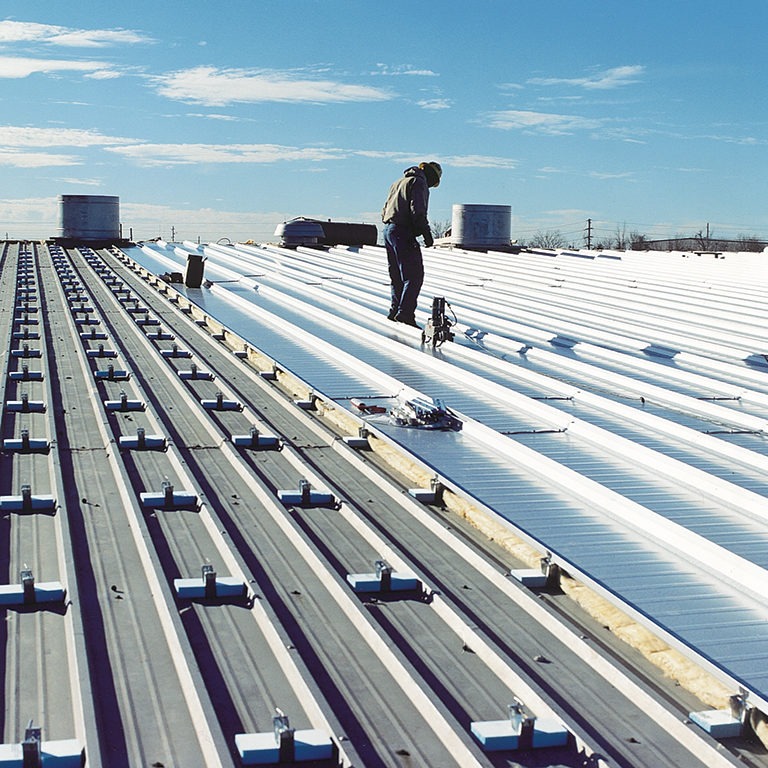Depending on what part of the country you are in, Fall brings with it changing leaves, cooler temperatures, and pumpkin-spiced everything. It can also bring with it severe weather, damaging winds, and the peak of hurricane season. These weather events can wreak havoc on your metal building, and depending on the damage, leave you in a state of distress or decreased business operations.
When you are in this position, the insurance process becomes a crucial lifeline. In this blog post, we’ll explore the challenges that you may face when navigating the insurance process after storm damage to your metal building, and the first few steps you will likely want to take.

- Document the Damage
First and most immediate challenge after a storm is accurately documenting the extent of the damage. This can be a daunting task, especially if you are dealing with large facility. Your first instinct is going to be starting the clean-up, but you should take clear and comprehensive photographs and videos of the damage, making sure to capture both the overall scene and close-up shots of affected areas. Additionally, creating a written inventory of damaged items and structural issues is essential for the claims process. The challenge here lies in ensuring that nothing is overlooked or underestimated, and contacting a contractor familiar with property insurance and scoping damages may be a big benefit.
- Understanding Policy Coverage
Insurance policies for pre-engineered metal buildings can vary significantly, and most of you may not know the details of your policy. Once you need to make a claim, It’s essential to get your hands on your policy, and review it to understand what is covered and what is not. Pay special attention to exclusions, deductibles, and coverage limits. Some policies may cover storm-related damage, while others may require additional riders or endorsements. The challenge is in deciphering insurance jargon and seeking clarification from your insurance provider when necessary. Asking questions in written form may be helpful: Do I have coverage for ice dam damage? Do I have coverage for wind damage? What exclusions may apply to this loss?
Not all metal buildings are created equal. After you document your damage and review your policy, you may want to gather documentation on your building – whether it is plans and drawings or parts and materials. For instance, if you have a Butler building, you may experience a smoother process or better repair results if you are able to provide specific information on your existing wall and roof systems. The challenge is in providing enough information to your insurance company to make sure your compensation covers the materials of the existing building for a seamless end result. Most insurers use software estimating tools to help them build an “estimate” of your repair. Unfortunately, these programs often do not account for specialized systems like Butler. Not all metal building products are created equal. These estimating softwares often estimate the median pricing of all common systems in your area, not necessarily what you currently own. This is when a specialist in your metal building system becomes incredibly important.
- Coordinating with Insurers
Once you’ve documented the damage and reviewed your policy, the next challenge is coordinating with your insurance company. Filing a claim promptly is crucial, as many policies have specific deadlines for reporting damage. Expect to communicate with claims adjusters who will assess the damage and determine the amount of compensation you’re eligible for. Coordinating this process can be time-consuming, and ensuring that the adjuster understands the unique characteristics of pre-engineered metal buildings is essential.
- Proving Causation
Insurance companies may require you to prove that the storm directly caused the damage to your pre-engineered metal building. This can be a challenge when other factors, such as wear and tear, preexisting damage, or inadequate maintenance, are in play. Providing evidence and expert opinions to establish causation can be a complex and contentious part of the claims process, like a contractor that is both an expert on your specific building system as well as the insurance claim process.
- Mitigation and Temporary Repairs
In the aftermath of a storm, it’s often necessary to take immediate steps to mitigate further damage and make temporary repairs to your pre-engineered metal building. While these actions are essential, they can also present challenges when dealing with insurance claims. Documenting these efforts and obtaining approval from your insurer for associated costs can be an intricate part of the process. It’s important to be able to allow access to the insurer for the purpose of their investigation is typically required by most insurance policies. Making sure that excessive mitigation is avoided as to not cause additional damages that may cause a coverage controversy.
- Handling Disputes
Unfortunately, disputes between property owners and insurance companies are not uncommon during the claims process. Disagreements can arise regarding the extent of damage, repair costs, or coverage issues. Resolving these disputes can be a protracted and frustrating challenge for property owners. When significant dispute arises, it is wise to contact a public adjuster or a lawyer that specializes in the field.
- Selecting a Reputable Contractor
Once your insurance claim is approved, you’ll face the challenge of finding a reputable contractor to repair or rebuild your pre-engineered metal building. It’s essential to choose a contractor with experience in working with these types of structures, as their unique design and construction require specialized knowledge and skills.
Navigating the insurance process after storm damage to your pre-engineered metal building is undoubtedly challenging, but it’s a critical step in the road to recovery. To help ease this process, consider partnering with a knowledgeable partner like EBS Solutions, who can assist in documenting damage, providing expert opinions, and ensuring that your building is restored to its former glory. Remember, you’re not alone in facing these challenges, and with patience and persistence, you can successfully navigate the insurance process and rebuild your valuable asset.
